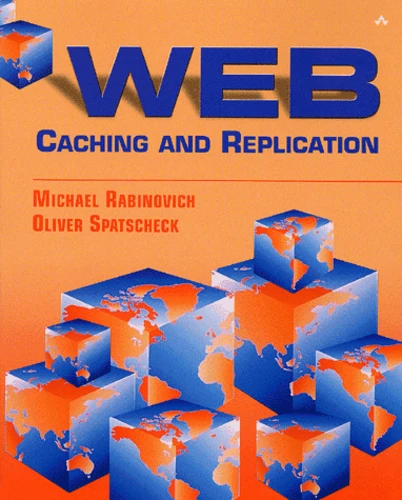Web Caching And Replication
Par : ,Formats :
- Paiement en ligne :
- Livraison à domicile ou en point Mondial Relay entre le 23 août et le 6 septembreCet article sera commandé chez un fournisseur et vous sera expédié 2 à 4 semaines après la date de votre commande.
- Retrait Click and Collect en magasin gratuit
- Livraison à domicile ou en point Mondial Relay entre le 23 août et le 6 septembre
- Nombre de pages400
- PrésentationBroché
- Poids0.8 kg
- Dimensions19,0 cm × 23,5 cm × 2,4 cm
- ISBN0-201-61570-3
- EAN9780201615708
- Date de parution20/02/2002
- ÉditeurAddison Wesley
Résumé
As the Internet grows, evolving from a research tool into a staple of daily life, it is essential that the Web's scalability and performance keep up with increased demand and expectations. Every day, more and more users turn to the Internet to use resource-hungry applications like video and audio on-demand and distributed games. At the same time, more and more computer applications are built to rely on the Web, but with much higher sensitivity to delays of even a few milliseconds. The key to satisfying these growing demands and expectations lies in the practices of caching and replication and in the increased scalability solutions they represent. Web Caching and Replication provides essential material based on the extensive real-world experience of two experts from AT&T Labs. This comprehensive examination of caching, replication, and load-balancing practices for the Web brings together information from and for the commercial world, including real-life products; technical standards communities, such as IETF and W3C; and academic research. By focusing on the underlying, fundamental ideas that are behind the varied technologies currently used in caching and replication, this book will remain a relevant, much-needed resource as the multi-billion dollar industries that rely on the Web continue to grow and evolve. The book approaches its two central topics in two distinct parts. The part on caching includes coverage of: Proxy caching, including latency reduction and TCP connection caching; Transparent and nontransparent proxy deployment; Cooperative caching; Cache consistency; Replacement policies; Prefetching; "Caching the uncacheable". The part on replication includes coverage of: Basic mechanisms for request distribution, including content-blind and content-aware request distribution; CDNs, including DNS request distribution, streaming content delivery, and secure content access; Server selection. Examples and illustrations are included throughout the book, Extensive cross-referencing also enables readers to identify the corresponding parts of each section. Web Caching and Replication concludes with a thorough look into the future. It not only considers how new services can be implemented on caching and replication platforms, but also outlines emerging technologies that will allow for cooperation between different caching and replication enterprises in order to improve the overall performance of the Web.
As the Internet grows, evolving from a research tool into a staple of daily life, it is essential that the Web's scalability and performance keep up with increased demand and expectations. Every day, more and more users turn to the Internet to use resource-hungry applications like video and audio on-demand and distributed games. At the same time, more and more computer applications are built to rely on the Web, but with much higher sensitivity to delays of even a few milliseconds. The key to satisfying these growing demands and expectations lies in the practices of caching and replication and in the increased scalability solutions they represent. Web Caching and Replication provides essential material based on the extensive real-world experience of two experts from AT&T Labs. This comprehensive examination of caching, replication, and load-balancing practices for the Web brings together information from and for the commercial world, including real-life products; technical standards communities, such as IETF and W3C; and academic research. By focusing on the underlying, fundamental ideas that are behind the varied technologies currently used in caching and replication, this book will remain a relevant, much-needed resource as the multi-billion dollar industries that rely on the Web continue to grow and evolve. The book approaches its two central topics in two distinct parts. The part on caching includes coverage of: Proxy caching, including latency reduction and TCP connection caching; Transparent and nontransparent proxy deployment; Cooperative caching; Cache consistency; Replacement policies; Prefetching; "Caching the uncacheable". The part on replication includes coverage of: Basic mechanisms for request distribution, including content-blind and content-aware request distribution; CDNs, including DNS request distribution, streaming content delivery, and secure content access; Server selection. Examples and illustrations are included throughout the book, Extensive cross-referencing also enables readers to identify the corresponding parts of each section. Web Caching and Replication concludes with a thorough look into the future. It not only considers how new services can be implemented on caching and replication platforms, but also outlines emerging technologies that will allow for cooperation between different caching and replication enterprises in order to improve the overall performance of the Web.

